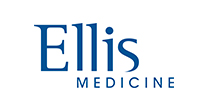News
June 12, 2015Albany Med Research Reveals Patients’ Understanding of Orthopaedic Health, Could Lead to Improved Outcomes
ALBANY, N.Y., June 11, 2015 — Using an innovative new patient survey, physicians at Albany Medical Center have been able to accurately measure patients’ understanding of their musculoskeletal health—an area of research that has been largely unexplored until now. The study’s findings could help orthopaedic surgeons improve patient outcomes.
“Being able to gauge patients’ understanding of their musculoskeletal health is a game changer in helping us identify at-risk individuals and improve communication between doctors and patients,” said Richard Uhl, M.D., head of the Division of Orthopaedic Surgery and a co-author of the study.
The nine-question survey, geared specifically to orthopaedic health, was created by Andrew Rosenbaum, M.D., a resident in Albany Med’s Division of Orthopaedic Surgery.
“We’ve known for a long time that when doctors think they’re explaining something, often patients feel as though they’re being spoken to in a foreign language,” Dr. Rosenbaum said. “What this study showed us is when it comes to orthopaedic conditions, the gap in patients’ understanding of their conditions is even greater than it is for general health issues. The hope is that by improving communication between physicians and patients, outcomes can be improved.”
Health literacy, or patients’ understanding of health conditions, has been shown to be a better predictor of a person’s health than age, income, employment status, education level and race, but it has often proved difficult for physicians to assess.
The Literacy in Musculoskeletal Problems (LiMP) Project, developed at Albany Med, measured patients’ understanding of anatomy, diagnosis and treatment by presenting the survey to patients in Albany Med’s Emergency Department, as well as those seeking treatment for carpal tunnel syndrome and foot and ankle injuries.
The study suggests that patients’ understanding of musculoskeletal health is lower than their general health literacy, with minorities and those with lower education levels having the lowest orthopaedic health literacy.
“We now have tangible building blocks to help us identify at-risk individuals, so patients don’t fall through the cracks,” said Dr. Uhl. “To our knowledge, this is the first orthopaedic literacy screening tool of its kind.”
In addition to Drs. Rosenbaum and Uhl, other researchers on the LiMP Project include orthopaedic surgeon Michael Mulligan, M.D., Emergency Department Physicians Daniel Pauze, M.D., and Denis Pauze, M.D., and Nancy Robak, R.N., MPH.
Drs. Mulligan, Rosenbaum and Uhl were invited by the American Orthopaedic Association, the oldest and most distinguished orthopaedic society in the world, to present their research at its 128th Annual Meeting on June 24 – 27 in Providence, R.I.
Albany Medical Center, northeastern New York’s only academic health sciences center, is one of the largest private employers in the Capital Region. It incorporates the 734-bed Albany Medical Center Hospital, which offers the widest range of medical and surgical services in the region, and the Albany Medical College, which trains the next generation of doctors, scientists and other health care professionals, and also includes a biomedical research enterprise and the region’s largest physicians practice with more than 450 doctors. Albany Medical Center works with dozens of community partners to improve the region’s health and quality of life. For more information: www.amc.edu or www.facebook.com/albanymedicalcenter.
























